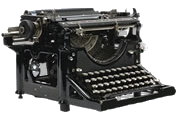A Letter from the Freshly Dug Trenches (New York Times, 1915)
This World War I letter makes for a wonderful read and it gives such a vivid picture of what the war must have been like once both sides had resigned themselves to trench warfare. The letter was dated October 8, 1914 and the British officer who composed it makes clear his sense that no war had ever been fought in this queer manner before.
A Letter from the Freshly Dug Trenches (New York Times, 1915) Read More »
